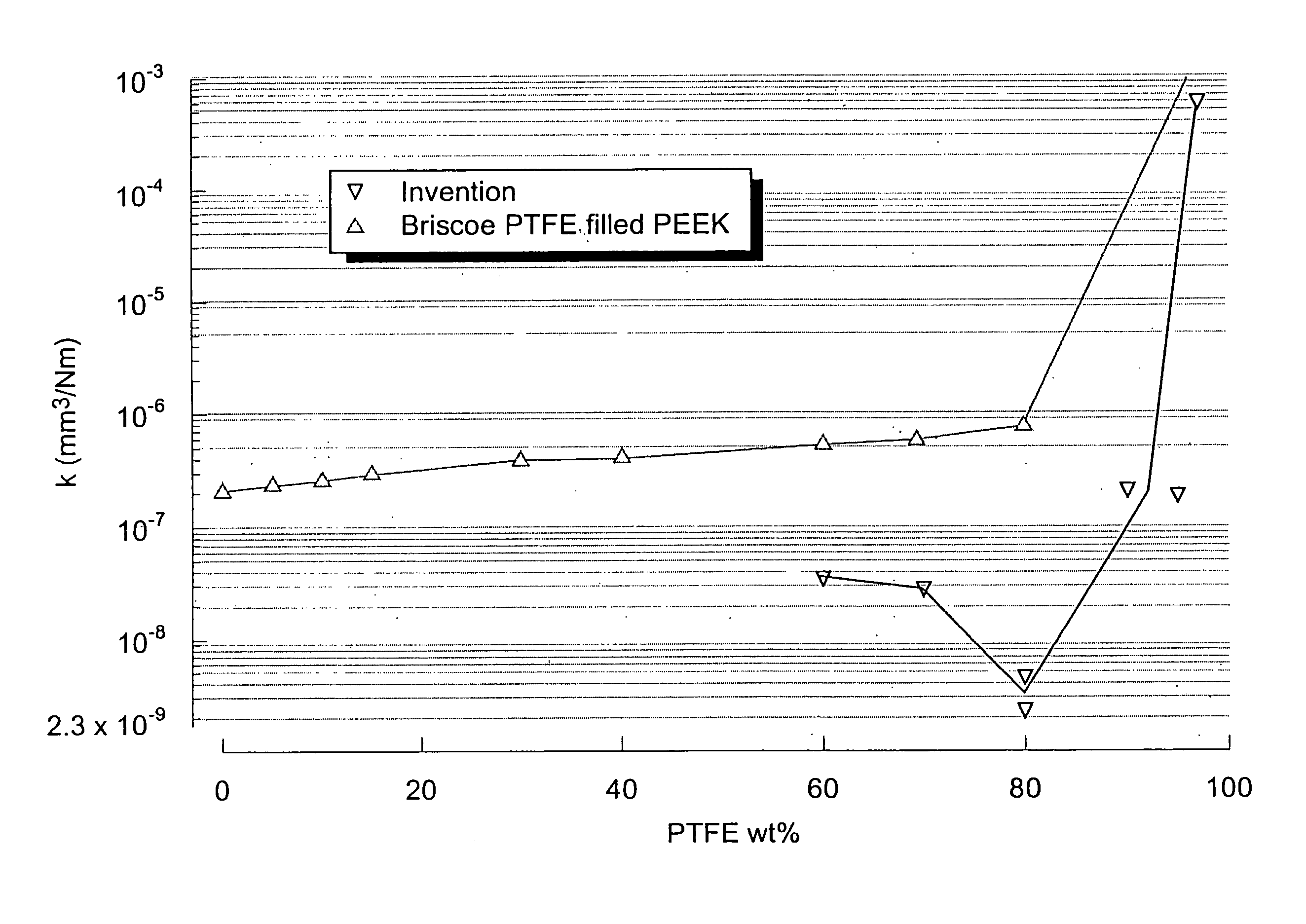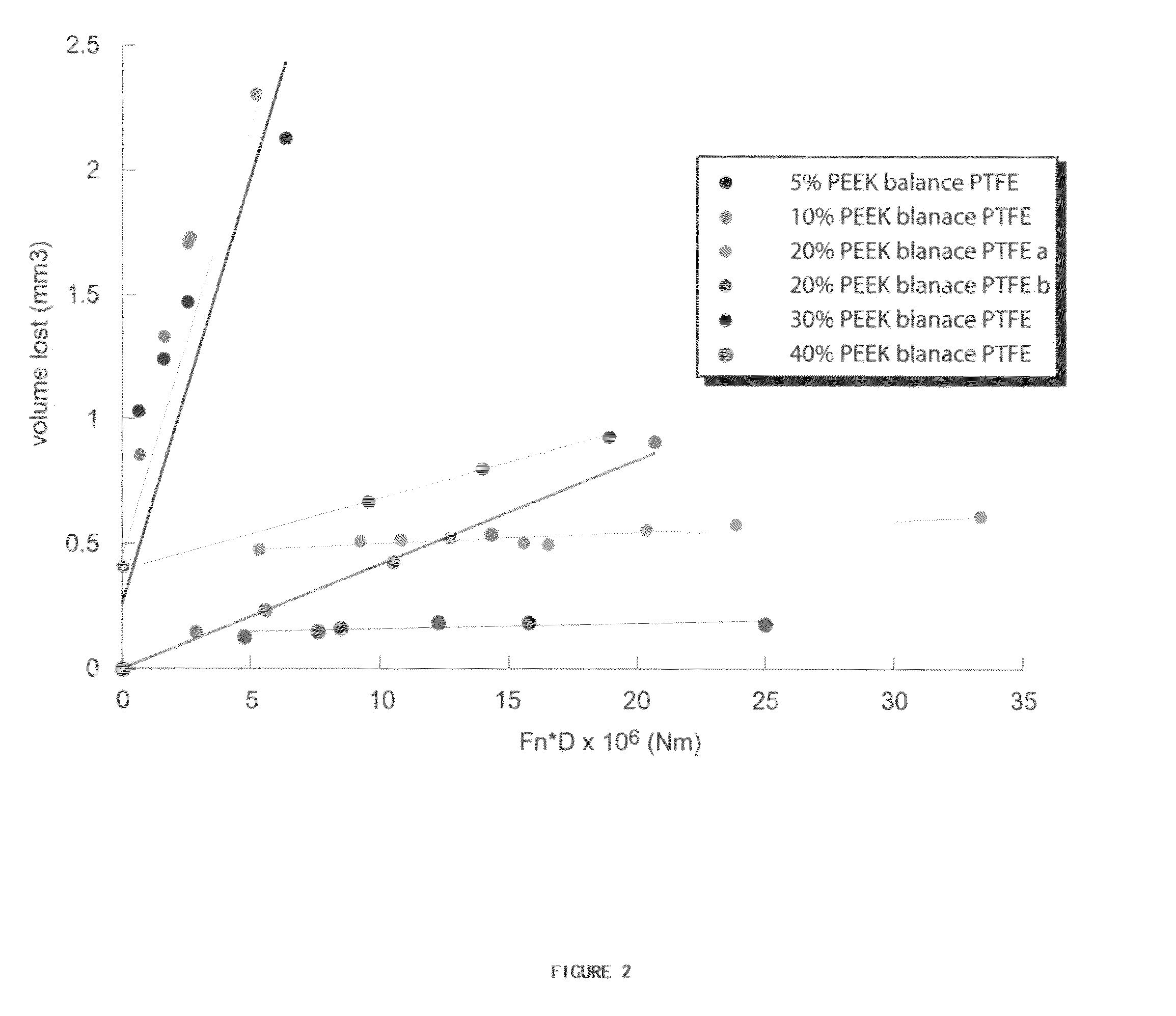Low friction and low wear polymer/polymer composites
a polymer/polymer composite and low friction technology, applied in the field of polymer/polymer composites, can solve the problems of high friction, low wear and high friction of peek, and high wear and friction of peek, and achieve the effects of low friction, low wear and high friction
- Summary
- Abstract
- Description
- Claims
- Application Information
AI Technical Summary
Benefits of technology
Problems solved by technology
Method used
Image
Examples
example 1
Formation of a PTFE / PEEK Composite
[0051]PTFE material was obtained from Dupont Corporation, Wilmington, DE and particle sizes ranged from about 1 μm to 20 μm. PEEK particles were obtained from (Victrex PLC, UK) and believed to be on the order of 100 nm. The PTFE was added to a mixing container and weighed using a Mettler Toledo precision analytical balance. The mixing container was weighed continuously as PEEK was added to the PTFE, until the desired weight fraction of PEEK was obtained. These materials remained unmixed in the mixing container and consisted mostly of agglomerations. A Sturtevant jet-mill apparatus was used to break up these agglomerated materials.
[0052]After milling, the composite powder was compression molded. Prior to using the mold, residual materials and oxides are sanded off the mold, and the mold was cleaned with hot sonicated water for 15 minutes. The mold was then dried with high velocity air from a compressor (filtered and dried), and filled with blended ma...
example 2
Tribological Testing
[0054]Data shown in FIGS. 1, 2, 3, 4 and 6 were based on the following procedure:
[0055]The mold used produced 19 mm diameterט25 mm long cylinders. Samples measuring 6.4 mm×6.4 mm×12.7 mm were machined out of the interior of the compression molded cylinders using a laboratory numerically controlled milling machine. The finished samples were then measured and weighed and a density of the sample was calculated from these measurements. Only 1 sample was made from each compression-molded cylinder.
[0056]The counterfaces were plates made from 304 stainless steel measuring 38 mm×25.4 mm×3.4 mm. This material had a measured Rockwell B hardness of 87.3 kg / mm2. Wear tests were performed on pins under dry sliding conditions against a 161 nm Rrms (with a standard deviation of 35 nm) lapped counterface. A linear reciprocating tribometer was used to test the composite material according to the invention. The counterface was mounted to a table that reciprocates 25 mm in each di...
PUM
| Property | Measurement | Unit |
|---|---|---|
| softening point | aaaaa | aaaaa |
| wt % | aaaaa | aaaaa |
| wt % | aaaaa | aaaaa |
Abstract
Description
Claims
Application Information
 Login to View More
Login to View More - R&D
- Intellectual Property
- Life Sciences
- Materials
- Tech Scout
- Unparalleled Data Quality
- Higher Quality Content
- 60% Fewer Hallucinations
Browse by: Latest US Patents, China's latest patents, Technical Efficacy Thesaurus, Application Domain, Technology Topic, Popular Technical Reports.
© 2025 PatSnap. All rights reserved.Legal|Privacy policy|Modern Slavery Act Transparency Statement|Sitemap|About US| Contact US: help@patsnap.com



